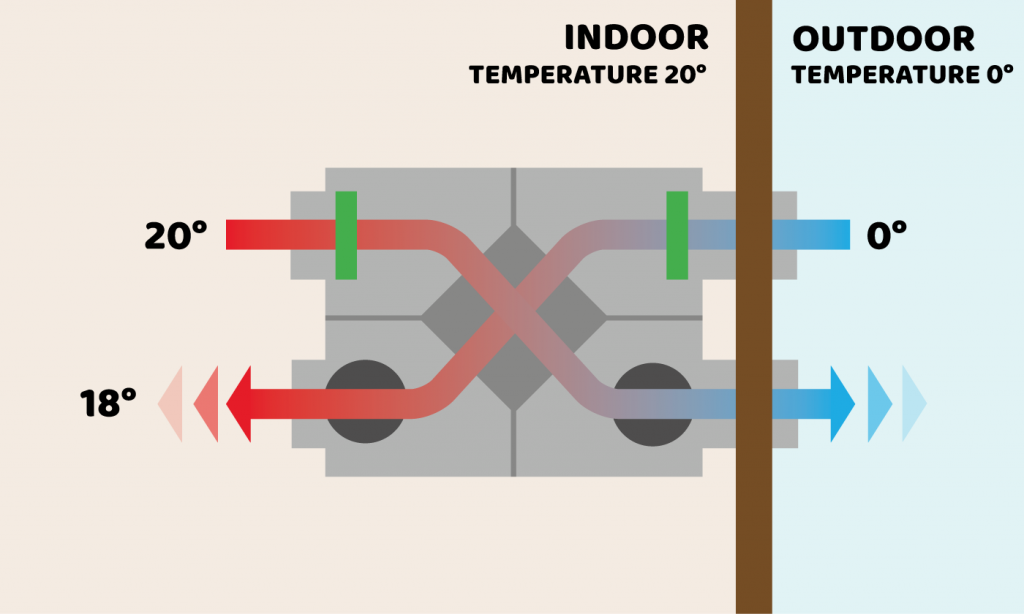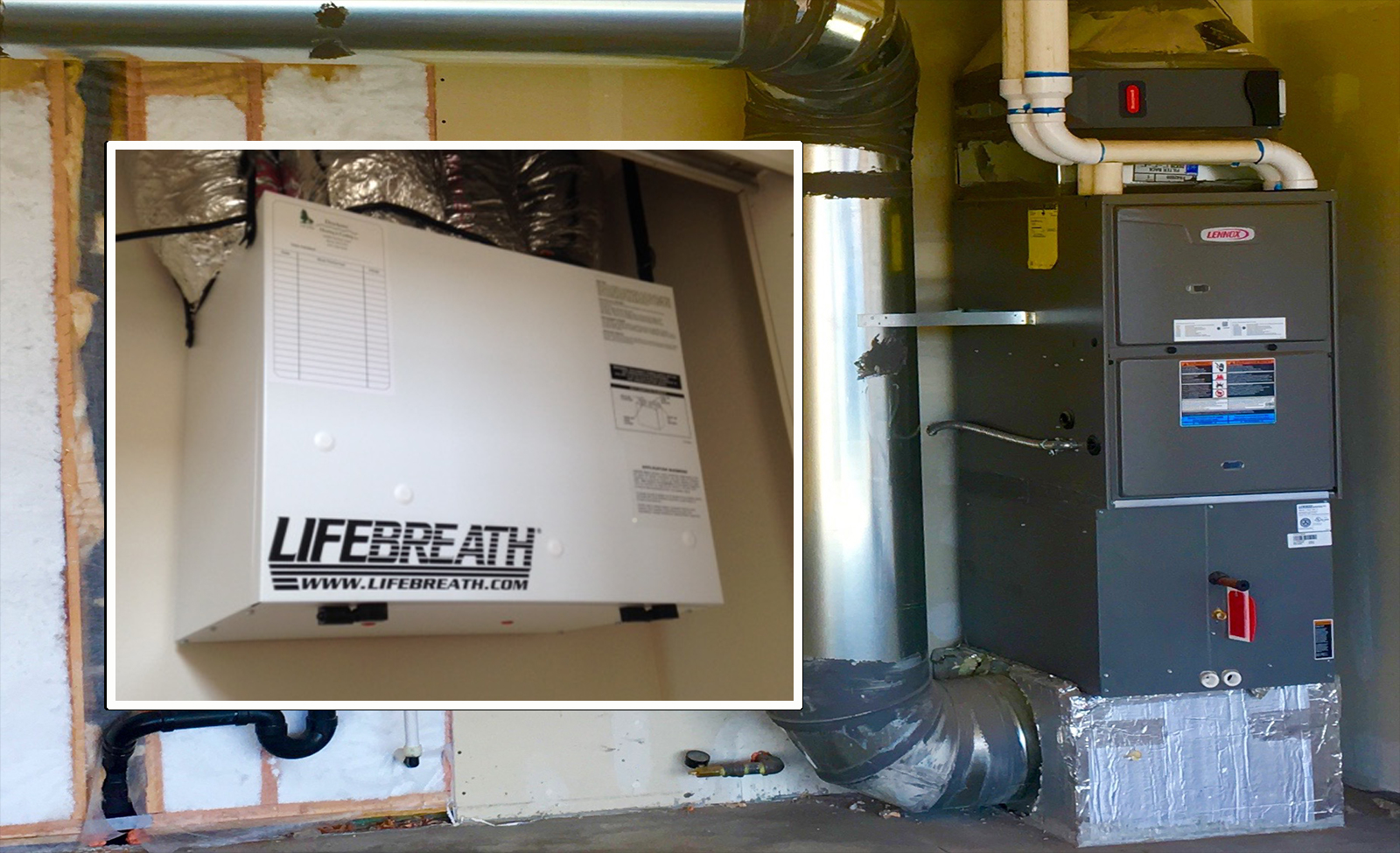How HRV Enhances Indoor Air Quality and Better Breathing
Wiki Article
Revealing the Trick Benefits and Uses of Heat Recovery Ventilation in Lasting Style
Heat Recovery Ventilation (HRV) systems play a necessary function in sustainable layout. They facilitate a continual exchange of stale interior air with fresh exterior air, significantly boosting indoor air top quality. HRVs contribute to power performance by recovering warmth from worn down air, which can decrease energy prices. Recognizing the multifaceted advantages and applications of HRVs exposes their value in modern style. What various other advantages do these systems offer in the quest of sustainability?Recognizing Heat Recovery Ventilation Solutions
Heat recovery ventilation (HRV) systems are made to enhance interior air quality while lessening power loss. These systems use a mechanical ventilation technique to exchange stagnant interior air with fresh outside air, ensuring a continuous supply of tidy air. By capturing warm from the exhaust air, HRVs precondition incoming air, decreasing the need on home heating and cooling down systems. This procedure not only improves thermal comfort however also adds to power efficiency in domestic and business structures. Additionally, HRV systems assist manage moisture levels and lower interior contaminants, promoting a much healthier living environment. Their strategic execution is vital for achieving lasting layout goals, as they use an equilibrium in between power conservation and passenger health.Exactly How HRV Solution Work
While several might recognize with air flow systems, comprehending how warm recovery ventilation (HRV) systems operate is important for valuing their advantages. HRV systems operate by exchanging stagnant interior air with fresh outside air while transferring warm between the two streams. This process occurs in a warm exchanger, where warm from the outward bound air warms the inbound air throughout chillier months, lessening power loss. Conversely, in warmer months, the system can cool inbound air making use of the cooler outgoing air. HRVs are equipped with followers to help with airflow and filters to remove particulates, guaranteeing a continuous, well balanced air flow procedure. This ingenious design not just improves energy efficiency yet likewise contributes to keeping a comfy interior setting.Enhancing Indoor Air High Quality
Indoor air top quality can greatly affect wellness and well-being, making reliable ventilation essential in contemporary homes. Heat Recovery Ventilation (HRV) systems play an important duty in keeping interior air quality by continually trading stale interior air with fresh outdoor air. This procedure not only minimizes air-borne pollutants however likewise minimizes humidity degrees, which can result in mold and mildew growth and respiratory concerns. HRV systems filter incoming air, eliminating irritants and particulates, therefore providing a healthier living setting. In addition, these systems assist get rid of smells and volatile organic substances (VOCs) frequently found in family products. By making sure a regular flow of clean air, HRV systems add to an overall better interior atmosphere, promoting comfort and wellness for passengers.Power Efficiency and Expense Financial Savings
Energy efficiency stands out as a significant advantage of Heat Recovery Ventilation (HRV) systems. By recording and reusing the warm from exhausted interior air, HRVs decrease the energy needed for heating incoming fresh air, bring about reduced power consumption. This performance translates into lower utility expenses, using considerable price financial savings for property owners and services alike. In addition, HRV systems usually receive energy performance incentives and rebates, even more improving their monetary allure. With time, the first financial investment in HRV technology can lead to a beneficial return on investment with decreased energy expenses. Consequently, the combination of HRV systems not only advertises sustainable layout but also provides a useful option for accomplishing long-term power financial savings and financial advantages.Ecological Advantages of HRV

A multitude of ecological advantages emerges from the application of Heat Recovery Ventilation (HRV) systems. By effectively moving heat from exhaust air to incoming fresh air, HRVs considerably reduce the energy needed for heating and cooling down rooms. This energy effectiveness equates to decrease greenhouse gas emissions, adding to a decline in the general carbon footprint of buildings. Additionally, HRV systems improve indoor air quality by continuously flowing fresh air, consequently decreasing the concentration of interior contaminants and irritants. Furthermore, the reduction in energy consumption help in conserving all-natural sources, making HRVs a crucial element of sustainable design. Generally, the environmental benefits of HRVs play an important duty in promoting a healthier earth and promoting environmentally friendly structure techniques.
Versatile Applications in Modern Style
Heat recovery ventilation (HRV) systems are progressively being incorporated into both property and business building projects. In property setups, HRVs improve indoor air top quality while making best use of power efficiency. In commercial rooms, these systems maximize ventilation techniques, demonstrating their adaptability in modern building applications.Residential Projects Integration
While contemporary design progressively highlights sustainability, the combination of warm recovery ventilation systems in property tasks has actually emerged as a functional remedy for boosting interior air high quality and power effectiveness. These systems successfully move warm from exhaust air to inbound fresh air, reducing power loss and minimizing home heating or cooling demands. In brand-new builds and retrofits alike, heat recovery ventilation can be effortlessly integrated, giving home owners with a much healthier living atmosphere while decreasing energy prices. In addition, with raising recognition of ecological influences, more architects and building contractors are identifying the lasting benefits of these systems. As a result, heat recovery air flow has come to be a vital element of sustainable residential layout, showcasing adaptability and dedication to environment-friendly practices.Commercial Rooms Optimization
As contemporary commercial rooms develop to fulfill the needs of sustainability and efficiency, the execution of heat healing ventilation systems becomes a vital method for optimizing indoor environments. These systems promote the exchange of stale interior air with fresh outside air while reclaiming heat, substantially decreasing power consumption. This not only enhances convenience for owners however additionally assists in decreasing operational expenses. Versatile applications can be observed in offices, retail areas, and universities, where air quality and temperature level control are paramount. In addition, integrating warmth recovery ventilation straightens with green structure certifications, additionally advertising environmental obligation. Inevitably, adopting such systems in industrial style not only adds to sustainability objectives however also promotes healthier, more effective areas for users.
Integrating HRV Into Sustainable Layout Practices
Incorporating heat recovery ventilation (HRV) systems into lasting design techniques supplies substantial benefits in energy efficiency and indoor air top quality. By making use of HRV, developers can create affordable services that not Read Full Article just reduce energy consumption yet additionally enhance the overall convenience of indoor atmospheres. This positioning with sustainability goals positions HRV as a necessary element in contemporary architectural techniques.
Power Efficiency Improvement
By incorporating heat recuperation air flow (HRV) systems into sustainable design methods, designers and contractors can considerably boost energy efficiency in Recommended Site modern-day building and constructions. HRV systems operate by catching heat from outward bound stagnant air and moving it to incoming fresh air, decreasing the energy needed for home heating or cooling down interior areas. This procedure not only reduces dependence on traditional a/c systems yet also decreases overall energy usage. In addition, HRV systems can aid maintain a regular interior temperature level, decreasing peak power demands. By incorporating these systems, buildings can accomplish significant reductions in energy prices and carbon footprints, straightening with sustainability goals. Eventually, HRV modern technology represents a sensible service for boosting energy efficiency in the developed environment, promoting even more responsible resource usage.Indoor Air Top Quality Improvement
Exactly how can warmth recovery ventilation (HRV) systems add to superior indoor air top quality in modern buildings? HRV systems successfully exchange stale indoor air with fresh exterior air while recovering warm power, decreasing temperature changes. This procedure reduces the concentration of interior contaminants, such as unpredictable natural compounds (VOCs), irritants, and wetness, which can wear away air top quality and effect owner health. By preserving excellent humidity degrees and making certain a continuous supply of clean air, HRVs help create a healthier indoor environment. Furthermore, these systems can be integrated right into lasting style methods, advertising power efficiency alongside improved air quality. HRV Heat Recovery Ventilation. HRV modern technology plays an essential duty in advancing general resident convenience and well-being in modern building layouts.Cost-efficient Layout Solutions

Regularly Asked Concerns
What Upkeep Is Required for Heat Recovery Ventilation Solutions?

Maintenance for warm recovery ventilation systems typically involves regular filter substitutes, cleaning of warm exchangers, inspection of fans and air ducts, and ensuring appropriate water drainage. These jobs help preserve effectiveness and extend the system's life expectancy over time.
Can HRV Equipments Be Installed in Existing Buildings?
Heat recovery ventilation systems can indeed be set up in existing buildings. HRV Heat Recovery Ventilation. Retrofitting calls for mindful preparation and evaluation of the building's format, making sure compatibility with present systems while making the most of energy performance and indoor air qualityHow Do HRV Solution Effect Noise Degrees Indoors?
HRV systems can affect indoor sound degrees by introducing sound from outside resources via ventilation. High-grade installations typically integrate sound-dampening functions, reducing sound influence while providing efficient air exchange and preserving comfort inside your home.Exist Any Kind Of Drawbacks to Utilizing HRV Equipments?
The disadvantages of click site making use of HRV systems consist of possible high preliminary expenses, maintenance challenges, and the opportunity of reduced interior air top quality if filters are sporadically changed, which can bring about problems with humidity levels.Just how Do I Choose the Right HRV System for My Demands?
Picking the appropriate warmth healing ventilation system involves reviewing certain requirements, such as developing size, climate, and energy effectiveness goals. Additionally, reviewing system attributes, setup requirements, and upkeep factors to consider is necessary for peak performance and complete satisfaction.Report this wiki page